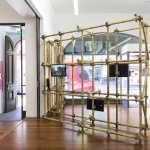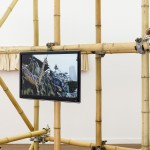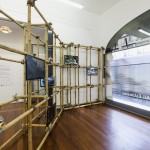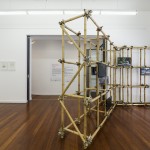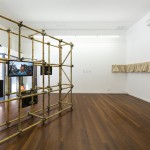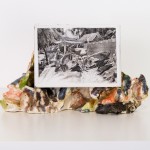By All Estimates
4A Centre for Contemporary Asian Art
12 April – 26 May 2019
Curator: Pedro de Almeida
Curatorial Assistant: Janet Jin
Taking Singapore as a locus of multiple regional identities, By All Estimates brings together works by artists that give form to narratives obscured by the city-state’s rapid urban and social development and the coexistence of competing projections of cultural inheritance and recognition. Over the past decade especially, Singapore’s investment in cultural institutions has been seen as an attempt to position the nation as a beacon of cultural capital in Southeast Asia. Underpinning this expansion lies an ever-evolving matrix of received and contested narratives that within certain contemporary public realms—from the streets of the city to the corridors of the museum—jostle, overlap or otherwise mingle in approximations of the influence of multiple societal and economic imperatives. By All Estimates presents works from Kolkata-based Rathin Barman, London-based Erika Tan and Singapore-based Moses Tan in Australia for the first time, alongside works from Singapore-born and Sydney-based artist Jess Bradford.
Bradford’s most recent body of work, Haw Par Villa – Video Snapshots series is part of an ongoing research project around the history and present-day incarnation of Singapore’s Haw Par Villa. Formerly known as Tiger Balm Garden, Haw Par Villa’s website describes the site as ‘an 8.5-hectare Asian cultural park, the last of its kind in the world … The eclectic park is a treasure trove of Asian culture, history, philosophy and religion—quirky yet enlightening, at the same time.’ Established in 1937 by Burmese-Chinese brothers Aw Boon Haw and Aw Boon Par—developers of the famous Tiger Balm medicinal ointment—the park was intended as a both an educational and entertaining experience that offered hundreds of statues and giant dioramas based on Chinese folk history, mythology and morality. In the 1980s, a period coinciding with Bradford’s early memories as a child visiting with her family, the park was acquired by the Singaporean Government during a period of concentrated governmental debate around national identity marked by a renewed focus on ‘Asian values’. Over the years, sculptures have been added or removed, modified or relocated by various involved parties, often altering the intended symbolism or meaning of the statues, dioramas and the park itself. In her work, Bradford excavates and further obfuscates Haw Par Villa’s layered representations of the intertwined projections of cultural and national identities that jostle among competing ideas about tradition and its processes of inheritance.

